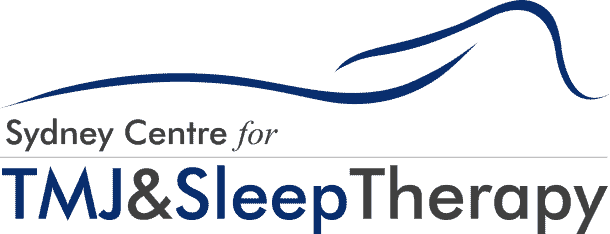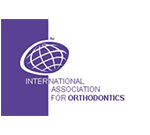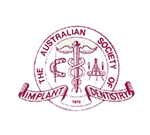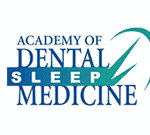If you often wake up with a headache or a sore jaw that makes weird clicking and popping sounds, then you might have a tight jaw caused by temporomandibular (TMJ) disorder. A tight jaw can cause some discomfort, if not pain. The pain often radiates to the ears, head, neck, and face. Depending on the severity of the condition, the pain could vary from tender to throbbing. In most cases, it gets worse while chewing and yawning. While there is no one-size-fits-all solution, you can get quick relief by learning how to release jaw tension.
There are two effective ways for quick jaw tension release: exercises and massage. You can choose either or both for best results.
Trigger Point Massage
Getting a good massage from an experienced massage therapist is probably the easiest way to get quick relief from muscle tension like a tense jaw. Massage increases the blood flow which helps reduce muscle tension, tightness, and inflammation.
Trigger point massage is often the most effective since it targets the particular area with the most tensed muscle – the jaws. Trigger points are tensed-muscles (also known as muscle knots) that cause the jaws to feel sore and tight. In terms of TMJ disorder, the most commonly tensed muscle is the masseter muscle, the muscle that covers the jaw over the teeth.
You use your masseter muscles for chewing and clenching the jaw. When overused though (as a result of excessive chewing, teeth grinding, and jaw clenching), the muscles can become inflamed and painful.
Trigger point massage can mend these muscles. Your best bet is to go to professionals with a good understanding of the TMJ musculature, such as physical therapists, massage therapists, osteopathic physicians, and even chiropractors.
When these muscles are too tight or imbalanced, your therapist can work to help relieve the knots by massaging the muscle tone to provide balance throughout the TMJ muscles. They will work by touching the muscles slowly and gently to help them relax by pressing their fingers or thumb into the muscle tissues. They will look for the knots and apply intense pressure to the trigger points to unravel the ropy muscle fibers for quick and effective relief.
Learn DIY Massage
You can, of course, start by learning how to release jaw tension yourself by gently rubbing the sore muscles around your jaw. Open your mouth and use your index, middle, and ring fingers to rub the muscle next to your ears in a circular motion. This is where the jaw joint is located. Repeat several times a day, especially before bed.
How to Release Jaw Tension with Exercise
Depending on the type and nature of the exercise, TMJ exercises can provide quick relief from pain by strengthening the jaw muscles, stretching, relaxing, increasing mobility, reducing clicking and popping, and promote healing of the jaw.
There is actually a study that supports the efficacy of therapeutic TMJ exercises and their benefits in providing better range for mouth opening compared to mouthguards in people with TMJ disc displacements.
Here are some examples of these therapeutic exercises and their frequency recommendations. For best results, consult your dentist/doctor for the right exercises for you.
Relaxed jaw (stretching exercise)
Your jaws can get tensed from time to time. It is important that you learn to relax these muscles.
Start by gently resting your tongue on the top of your mouth, behind the upper front teeth. Let your teeth come apart and your mouth open slightly while relaxing your jaw muscles. Maintain this relaxed position as often as you can, or every time you feel your jaws are tensing up.
Also, make sure it feels natural, don’t force your way to the relaxed position. Remember, the goal is to loosen the tensed muscles around the jaw.
Chin Tucks (stretching exercise)
It is definitely what it sounds like – tuck your chin.
Keep your chest up and shoulders back, then tuck your chin close to your neck. You are basically making a “double chin”. Hold this position for 3 to 5 seconds before going back to the starting position. Repeat 10 times.
Goldfish exercises – partial and full variation (strengthening exercise)
- Partial opening – Put your tongue on the roof of your mouth and place your right index finger in the muscle area in front of your ear, where your TMJ is located. Next, place your left index finger on your chin and drop your lower jaw by making a partial opening (halfway open). You should feel a mild resistance, but there should be no pain. Switch the fingers (left index finger for the left TMJ, and right index finger on the chin) and do the exercises six times. Do the exercise six times a day.
- Full opening – Same starting position as the one above, but this time, use your index finger to completely drop the jaw down to make a full mouth opening. Repeat the movement six times and do six sets a day.
- Resisted mouth movement – resisted opening and resisted closing (strengthening exercise)
- Resisted opening – Place your right thumb under your chin to push the chin up. Try to open your mouth slowly and gently by going against the force. Hold the position for 5 seconds before closing your mouth.
- Resisted closing – Use your index and thumb of both hands to squeeze and hold your chin. Try to gently close your mouth against the pressure. Hold the position for 5 seconds before closing your mouth.
Tongue up (stretching exercise)
Push your tongue gently to the roof of your mouth and open your mouth as wide, yet not uncomfortably so, as possible. You should feel no pain. Hold this position for 10 seconds. Close your mouth slowly and go back to the starting position.
- Jaw movements – Forward and side-to-side jaw movement (stretching and strengthening)
- Forward jaw movement – Place a quarter inch object (tongue depressors for example) between your front teeth. Move your jaw forward so your bottom teeth are in front of your top teeth. Increase the thickness (stacking multiple tongue depressors) as you get used to the movement.
- Side-to-side movement – Again, place a quarter inch object between your front teeth. Next, move your jaws from side to side slowly. Increase the thickness (multiple tongue depressors) as you get used to the movement.
Note that these exercises are meant to provide quick jaw tension and pain relief. They are not meant for long-term solutions for chronic pain and TMJ disorder. Again, there are no one-size-fits-all solutions, since treatments depend on the cause and severity of the condition. Your best option still is to consult your doctor.


























